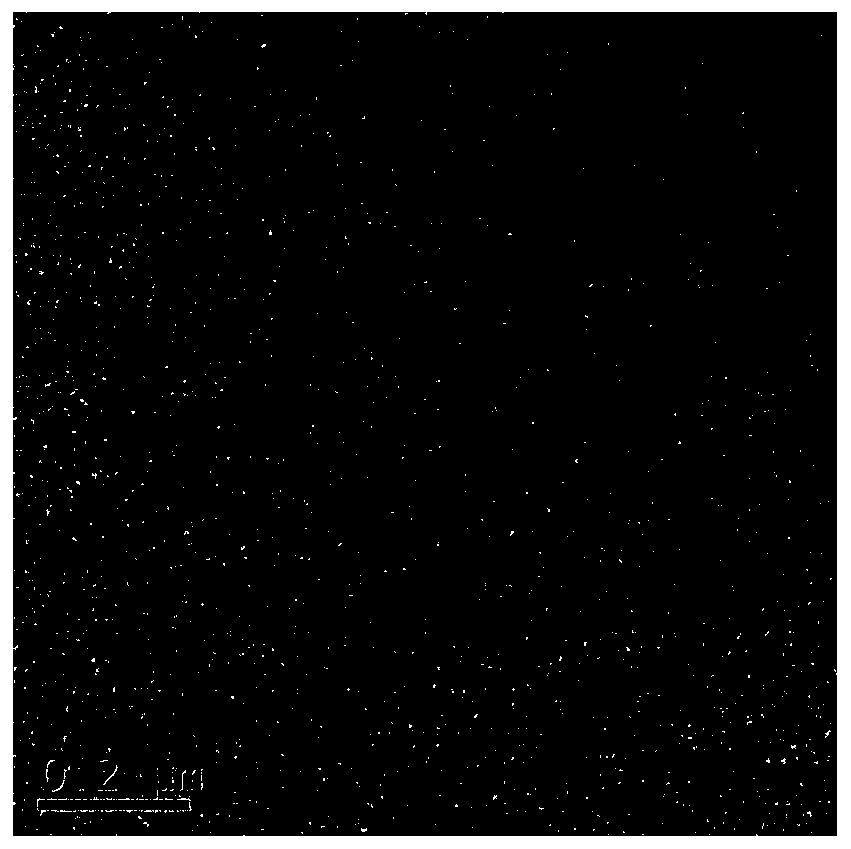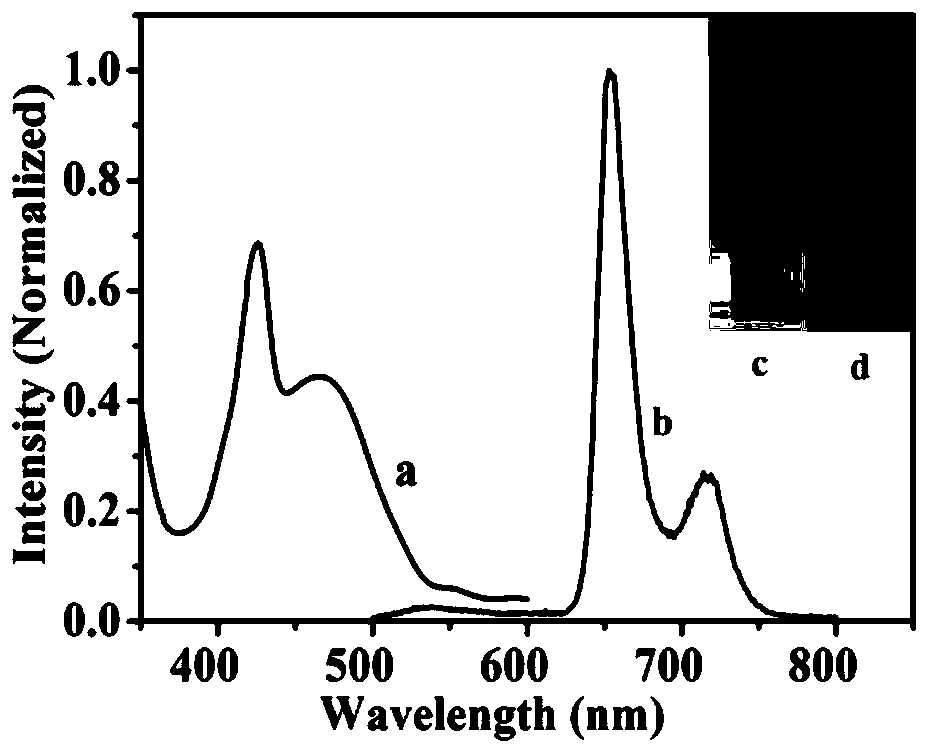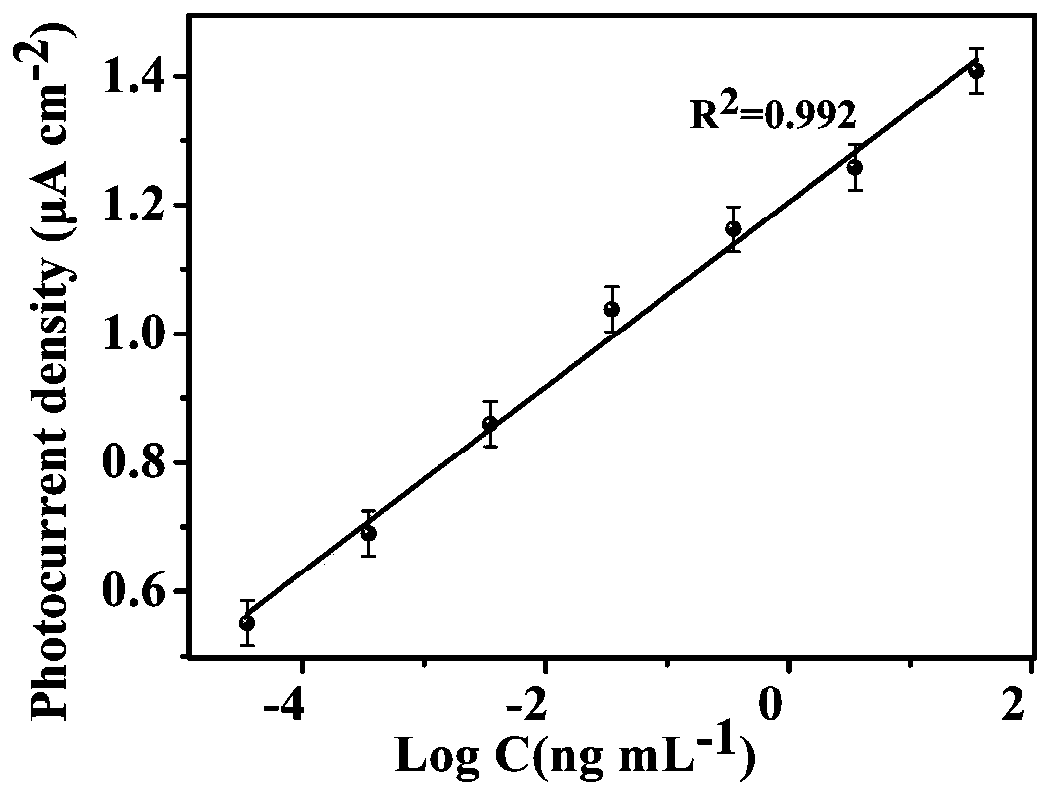Preparation and application of photoelectricity and temperature dual-signal response sialic acid bio-sensor based on polymer dots
A biosensor, polymer dot technology, applied in the field of biosensors, can solve the problems of limited application and development, tedious preliminary preparation, expensive detection instruments, etc., to achieve excellent photothermal performance, widen detection range, and good reproducibility.
- Summary
- Abstract
- Description
- Claims
- Application Information
AI Technical Summary
Problems solved by technology
Method used
Image
Examples
Embodiment 1
[0033] 1. A preparation method and application of a biosensor based on photoelectric and temperature dual-signal responses of polymer dots, characterized in that, comprising the following steps:
[0034] (1) Mechanically polish the glassy carbon electrode (GCE) with 50 nanometers and 30 nanometers of alumina powder on the wet suede until the surface of the electrode is bright and clean, and rinse the residual alumina powder on the surface of the electrode with deionized water , and finally rinse thoroughly with absolute ethanol and secondary deionized water.
[0035] (2) Add dropwise 3 μL of fullerene (C 60 ) solution (the solvent is dimethylformamide) on the surface of a polished glassy carbon electrode, put it in an infrared light box for drying, take it out, and cool it at room temperature to obtain C 60 Modified glassy carbon electrode;
[0036] (3) Drop 3 μL of gold nanometer (Au) solution with a concentration of 3 mg / mL on the surface of the electrode prepared in step ...
Embodiment 2
[0044] The sector-shaped rutile-type titanium dioxide (R-TiO2) used in above-mentioned embodiment 1 2 ) was prepared by the following method: 1 g sodium dodecylbenzene sulfonate (SDBS) was dissolved in 50 mL 2.2 mol / L HNO 3 Solution, shake and mix on a vortex mixer for tens of minutes, then add 1 mL of isopropyl titanate (TIP), then shake the above mixture for 24 hours at 48 °C, and react with deionized water and ethanol The resulting mixture was washed several times, centrifuged, dried at 60°C, and then calcined at 400°C for 1 h to remove residual organic components in the product to obtain the final product. The obtained product was evenly dispersed in 1 mL of deionized water (use methods such as ultrasonic mixing to make it uniformly dispersed), and the obtained R-TiO 2 The solution was placed in a 4°C refrigerator and stored for future use.
Embodiment 3
[0046] The preparation method of the tetraphenol-doped polymer dot (TPP-pdot) used in the above Example 1 is as follows: polymer (PFBT), functional polymer co-maleic anhydride (PSMA) and sensitizer tetraphenol ( TPP) were dissolved in tetrahydrofuran (THF), and dispersed uniformly by ultrasonication. Mix the above three solutions. In the mixture, the concentration of PFBT is 200 µg / mL, the concentration of PSMA is 40 µg / mL, and the concentration of TPP is 10 µg / mL. Then the obtained mixed solution was ultrasonicated for 20 min to form a uniformly dispersed solution. Under ultrasonic conditions in a water bath, 4 mL of the above mixture was quickly added to 20 mL of deionized water. The THF solvent molecules in the solution were purged with nitrogen, and finally the mixture was rotated and evaporated at 55° C. to fully remove residual THF molecules to obtain a yellow transparent liquid.
[0047] The poly[(9,9-dioctylfluorene-2,7-diyl)-alternate-(2,1,3-benzothiazole)](PFBT), p...
PUM
 Login to View More
Login to View More Abstract
Description
Claims
Application Information
 Login to View More
Login to View More - Generate Ideas
- Intellectual Property
- Life Sciences
- Materials
- Tech Scout
- Unparalleled Data Quality
- Higher Quality Content
- 60% Fewer Hallucinations
Browse by: Latest US Patents, China's latest patents, Technical Efficacy Thesaurus, Application Domain, Technology Topic, Popular Technical Reports.
© 2025 PatSnap. All rights reserved.Legal|Privacy policy|Modern Slavery Act Transparency Statement|Sitemap|About US| Contact US: help@patsnap.com



